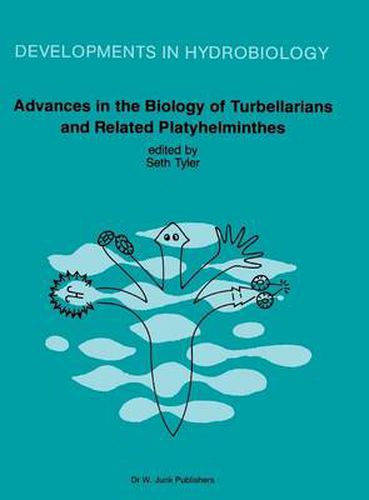Advances in the Biology of Turbellarians and Related Platyhelminthes: Proceedings of the Fourth International Symposium on the Turbellaria held at Fredericton, New Brunswick, Canada, August 5-10, 1984

Advances in the Biology of Turbellarians and Related Platyhelminthes: Proceedings of the Fourth International Symposium on the Turbellaria held at Fredericton, New Brunswick, Canada, August 5-10, 1984
This title is printed to order. This book may have been self-published. If so, we cannot guarantee the quality of the content. In the main most books will have gone through the editing process however some may not. We therefore suggest that you be aware of this before ordering this book. If in doubt check either the author or publisher’s details as we are unable to accept any returns unless they are faulty. Please contact us if you have any questions.
While the reality of the taxon Turbellaria has been called into question lately, turbellarians are nevertheless the subject of active research by a sizable group of biologists. Turbellarians are relatives of the major groups of parasitic platyhelminthes - monogeneans, digeneans, and tapeworms - and most are free-living. Because the ancestors to the major parasitic groups would be classified as turbellarians, strict application of princi- ples of phylogenetic systematics dictates that the Turbellaria is not properly considered a separate taxon; i. e. , it is, in the parlance of systematics, a paraphyletic group. The relationships of turbellarians to other inver- tebrates are even more problematic than their relationships to other platyhelminthes; their relatively simple morphology has been variously interpreted as quintessentially primitive - meaning a turbellarian-like ances- tor would have given rise to most of the major groups of invertebrates - or as secondary simplification, meaning they would essentially be a dead-end group. Modern research on turbellarians covers a broad spectrum. Questions of phylogenetics have inspired ultrastructural studies; the simply structured nervous systems of turbellarians make them good subjects for neurophysiology; simplicity of their tissue structure and the limited number of cell types make them good subjects of embryological and regeneration studies; they are emerging as iIIJ. portant indicator species in ecolo- gy; and improvements in biochemical methodology have meant they are at last amenable - despite their small size - to molecular biological study.
This item is not currently in-stock. It can be ordered online and is expected to ship in 7-14 days
Our stock data is updated periodically, and availability may change throughout the day for in-demand items. Please call the relevant shop for the most current stock information. Prices are subject to change without notice.
Sign in or become a Readings Member to add this title to a wishlist.

